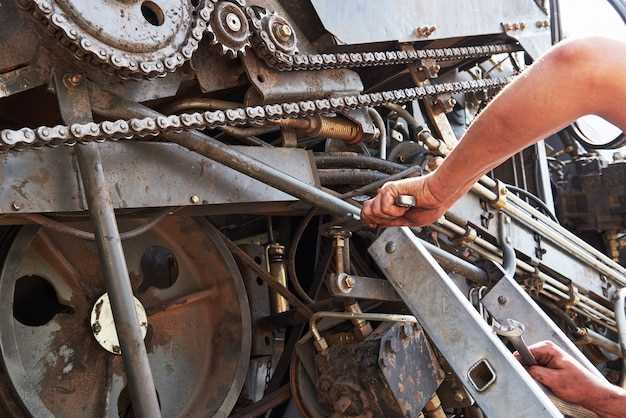
Timing chains are crucial components in the operation of an internal combustion engine, especially in German-engineered vehicles known for their precision and performance. Unlike timing belts, which require replacement at regular intervals, timing chains are designed for durability but are not immune to wear and failure over time. Understanding the intricacies of replacing timing chains in German engine models can significantly extend the lifespan of the engine and maintain optimal performance.
German automotive manufacturers, such as Audi, BMW, and Mercedes-Benz, employ advanced engineering techniques that enhance engine performance and efficiency. However, the complexity of their timing chain systems demands specific knowledge and tools for successful replacement. Improper handling during the replacement process can lead to severe engine damage or costly repairs down the line.
This article delves into the essential aspects of timing chain replacement, focusing on identifying signs of wear, understanding the replacement procedure, and exploring the best practices tailored for German engine models. By arming yourself with this knowledge, you can ensure the reliability and longevity of your vehicle’s engine while potentially saving on mechanic fees.
Identifying Symptoms of Timing Chain Wear in German Engines
Timing chains are crucial components in German engines, responsible for synchronizing the movement of the crankshaft and camshaft. Over time, wear occurs, leading to potential engine damage. Recognizing the symptoms of timing chain wear early can prevent costly repairs.
One of the most common symptoms is abnormal engine noise. A rattling or clattering sound coming from the front of the engine, especially during startup or acceleration, often indicates that the timing chain is loose or damaged. This noise may become more pronounced as the engine warms up.
Another significant symptom is engine misfiring or rough idling. If the timing chain is worn, it can cause the camshaft to fall out of sync with the crankshaft, leading to improper valve timing. This misalignment results in a rough running engine and may trigger a check engine light.
Additionally, reduced engine performance can signal timing chain issues. Drivers may experience sluggish acceleration and a decrease in power output, which can be attributed to the timing chain’s inability to maintain proper synchronization of the engine’s components.
In some cases, oil leaks may develop around the timing chain cover, indicating wear or damage. This occurs when seals and gaskets become compromised due to wear on the timing chain assembly.
Vibration is another symptom to watch for. If the timing chain is stretched, it can create excessive movement within the engine, leading to noticeable vibrations felt through the vehicle’s chassis.
A sudden increase in fuel consumption can also be a sign of timing chain wear. An improperly functioning timing system can lead to inefficient engine operation, causing the vehicle to consume more fuel than usual.
Regular maintenance checks and prompt attention to these symptoms can help in diagnosing timing chain wear early, allowing for timely intervention and minimization of damage to the engine.
Step-by-Step Guide to Replacing Timing Chains in Specific German Models

Replacing timing chains is critical for the performance and longevity of German vehicles. This guide outlines the process for popular models, focusing on Audi, BMW, and Volkswagen engines.
Tools and Materials Needed: Before starting, ensure you have the necessary tools: a socket set, torque wrench, timing chain kit, engine oil, and basic hand tools. It’s essential to follow the manufacturer’s specifications for any additional components needed.
Step 1: Prepare the Vehicle – Begin by parking the vehicle on a flat surface and disconnecting the battery. Ensure that the engine has cooled down completely to prevent burns. Lift the vehicle using jack stands and remove the front wheels for easier access.
Step 2: Remove Necessary Components – Depending on the model, this may include the radiator, fan, and various covers. On Audi models, you may need to detach the intake manifold for better access. For BMWs, removing the front bulkhead can facilitate removal of the timing cover.
Step 3: Align the Engine – Rotate the crankshaft to align the timing marks, ensuring that cylinders one is at top dead center (TDC). This step is crucial for maintaining the engine’s timing throughout the process.
Step 4: Remove the Old Timing Chain – Carefully remove the tensioner and guide rails. Pay attention to the positioning of each component for accurate reassembly. For Volkswagen models, note that some variations may have a dual timing chain setup, requiring double-checking of installation sequences.
Step 5: Install the New Timing Chain – Position the new timing chain in accordance with the manufacturer’s instructions. Ensure that the marks on the chain align with the timing gear. On BMW models, verify that the chain holds tension and aligns properly with the camshafts and crankshaft.
Step 6: Reassemble the Components – Replace the tensioner and guide rails, securing them as per torque specifications. Reattach the covers, intake, and any other components previously removed, ensuring all gaskets are in good condition.
Step 7: Reconnect the Battery and Test – Once everything is reassembled, reconnect the battery. Start the engine and listen for unusual noises. Monitor the oil pressure and check for leaks around the timing chain area.
Step 8: Final Checks – After a test drive, check the timing chain tension again. It’s also advisable to monitor the vehicle’s performance over the next few days to ensure everything functions correctly.
Completing these steps carefully will ensure a successful timing chain replacement, extending the life of your German engine and maintaining optimal performance.
Tools and Parts Required for a Successful Timing Chain Replacement

Replacing the timing chain in German engine models requires a precise selection of tools and parts to ensure the job is completed effectively. The following list outlines the essential items needed for a successful replacement.
Essential Tools:
1. Timing Chain Tool Kit: A specialized kit designed for timing chain replacement, typically including chain tensioner tools, locking tools, and alignment tools specific to the engine model.
2. Torque Wrench: An accurate torque wrench is necessary to apply the correct torque settings on bolts and nuts during reassembly to prevent any potential engine damage.
3. Socket and Ratchet Set: A comprehensive socket and ratchet set will facilitate the removal of various engine components, such as the crankshaft pulley and timing cover.
4. Screwdrivers: Both flat-head and Phillips-head screwdrivers are important for removing screws that may secure components in place.
5. Pullers: A puller is useful for removing pulleys or gears attached to the timing chain without damaging surrounding components.
6. Engine Stands or Supports: Depending on the engine configuration, supports may be necessary to hold the engine in place while working on the timing chain.
Required Parts:
1. Timing Chain: The primary component that needs replacing, ensure you choose a high-quality chain compatible with your specific engine model.
2. Timing Chain Tensioner: A new tensioner is critical to maintain proper chain tension and prevent chain slack during operation.
3. Timing Chain Guides: Inspect and replace worn guides, as they help to maintain the correct alignment and positioning of the timing chain.
4. Gaskets and Seals: New gaskets for the timing cover and any other associated seals will prevent oil leaks and ensure proper sealing during reassembly.
5. Oil Pan Gasket: If the oil pan is removed during the process, make sure to have a replacement gasket ready.
6. Engine Oil and Filter: After replacing the timing chain, it’s advisable to replace the engine oil and filter to ensure the engine operates smoothly.
By adequately preparing these tools and parts, you can ensure a smoother process and reduce the likelihood of complications during the timing chain replacement in German engine models.




